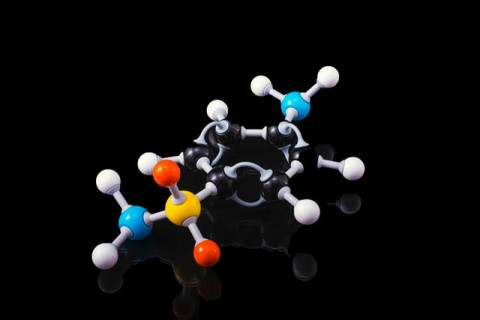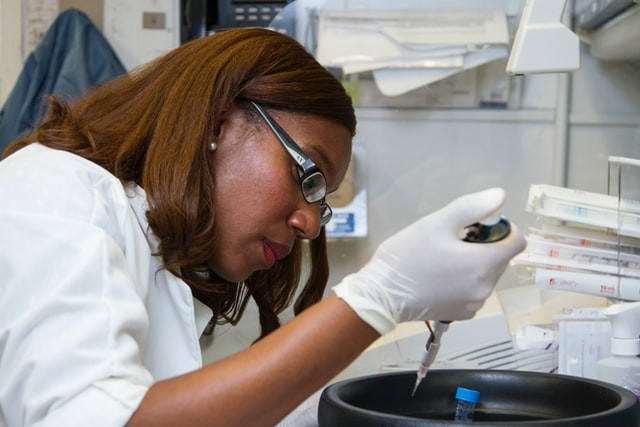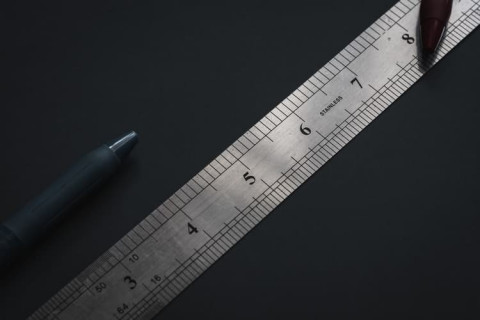
9 min
1
10.04.2022

When you create research, you need to draw up a chemistry lab report based on it. In this paper, you will need to write-up the entire experiment procedure very accurately, that the reader can repeat the lab work. To simplify the writing process, we have created a helpful chemistry lab manual. However, remember that the sections of the report may differ depending on your educational institution. Therefore, carefully analyze the teacher's requirements before you start writing.
Chemistry Lab Report - What Is It?
A chemistry lab report is a technical document that contains accurate data on laboratory work. In the report, the student describes the theory, the instruments used in the laboratory work, the experiment's course, calculations, and results, if necessary, specifies background information. Important! The report should be written by the person who experimented with avoiding mistakes and not confusing the reader. Most often, there is the past tense and scientific style in work.
How Long Is The Chemistry Lab Report?
The length of the report should not exceed the scope of the laboratory work. The laboratory report should contain all the structural elements that the experiment includes. However, the sections need to be shortened. Otherwise, it will be copied text that does not differ in any way from real laboratory work. Most often, the report consists of 8-10 pages.
In What Style To Design Paper?
For the formulation of the report, the ACS style is suitable for you. The American Chemical Society is a scientific organization in the United States that brings together researchers working in chemistry. The American Chemical Society publishes about 70 reputable scientific journals in chemistry per year, its divisions, and related fields:
- organic chemistry;
- inorganic chemistry;
- physical chemistry;
- medicinal chemistry;
- analytical chemistry;
- biochemistry;
- molecular biology;
- applied chemistry and chemical technology;
- materials science.
However, the company only accepts articles that meet the requirements of the ACS style guide. If you want your report to look flawless, read the instruction and apply them to the article.
Chemistry Lab Report - Basic Elements
The structural elements of the report are:
- title page;
- introduction;
- purpose of the experiment;
- theoretical information;
- equipment;
- experimental section;
- calculated values;
- discussion section;
- conclusions on the work;
- bibliography.
Title Page
For each type of scientific report, the title page is drawn up differently. However, for a chemical report on the first page, you must place the information as follows:
- The upper field contains the full name of the educational institution.
- In the middle field - report type, discipline, and study name without quotation marks.
- In the first part of the page, write your initials. If you had a lab partner, add data about it. Please fill in the name, surname, and degree of the instructor reviewing the report below.
- At the bottom of the sheet, indicate the place and year of study.
We recommend that you make a title sheet in a separate document. While writing your work, you are likely to make edits. If you correct the text after the cover sheet, the layout and formatting may be lost.
Introduction
In the introduction, you need to familiarize the reader with the problem, topic, or questions you are researching. For example, if you have experimented with organic chemistry, then the report can indicate why ea science is essential. Write an introduction using the third person - this is an essential requirement. The first-person pronouns are intended for the experimenter himself. In the report, the words "I," "we" should not be.
Purpose Of The Experiment
In this section, you need to formulate the laboratory work's goals and objectives to justify its relevance. That is, you must state the degree of importance of the research.
The goal of the lab is the result you planned to arrive at. When formulating a goal, you should use action verbs: explore, study, test, define, and so on. After that, indicate the research object and the tasks that you wanted to solve: measure, consider, conduct, develop, and the like.
The volume of the section depends on the depth of research and the complexity of the work. Most often, experimenters write one paragraph or half a page.
Brief Theoretical Information
The central part of the work contains theoretical material and a description of the stage of the experiments. In the theory section, you can write the following information:
- description of the subject being studied;
- sources (scientific articles, books);
- laws, formulas, and calculations.
Write the theoretical part in concise and understandable language. Each reader should understand what is at stake.
Technical Equipment
Since you use specialized equipment to conduct your research, the report should mention what technical means helped you conduct the experiments. For example, describe what burettes, volumetric flasks, reagents you used in your work.
Experiment
The theoretical and experiment parts should be closely related. You cannot set one task at the beginning of work, and in the course of practice, perform another. Also, the title of the experiment must meet the research requirements. It is the experimental part that shows whether there is a scientific novelty in the work.
In this part, write only reliable, verified, relevant information. If you are asked where the specific numbers in the experiment came from, you should explain them. Consider a small example of the experimental part:
"The lime method of obtaining NaOH consists of a soda solution with slaked lime at a temperature of about 80 ° C. This process is called causticization. It follows the reaction:
Na2CO3 + Ca(OH)2 = 2NaOH + CaCO3
As a result of the reaction, a NaOH solution and a CaCO3 precipitate are obtained. Calcium carbonate is separated from the solution, evaporated to obtain a molten product containing about 92% of the mass. After NaOH is melted and poured into iron drums, where it solidifies."
Data Analysis
The experiment will not play a special role in the learning process if you do not accompany the article with a detailed analysis of the calculated values. You must interpret the results of the experiments carried out and conclude from the numbers obtained.
The Discussion Of The Results
Students who are conducting chemical experiments should put forward a hypothesis in the introduction. When you are going to draw up a report, indicate how much the results correspond to the hypothesis put forward. Also, you should note especially significant, unusual, unexpected, or incomprehensible results at this point. However, raw data, which does not affect the experiment, should not be specified. In this part, you can summarize the data and describe how they fit with the existing theories. That is, your task is to discuss the pros and cons of the received data.
Conclusion
In the final part, you must confirm whether you have managed to achieve your goals and accomplish tasks. This section should briefly mention:
- what have you researched;
- what measurements were taken;
- what result did you get;
- what you built graphs, diagrams, and what conclusions were drawn on their basis.
Bibliography
You can draw up a list of references:
- in alphabet order;
- in chronological order;
- in a systematic manner;
- in order of citation.
However, before you decide how you want to design your bibliography, study the style of APA, ASA, Chicago, Harvard. The manuals describe how to create headings, lists for this section.
General Requirements To The Report
A laboratory report helps the teacher assess the student's level of knowledge in the subject of chemistry. Since the educational system does not set strict limits on the report's text format, each school, college, or university may have its requirements. But in general, in the 2022 report, you should adhere to such recommendations.
Font
You should arrange the text of the work on a white A4 sheet and place it on one side using passive voice. When working with Word, use Times New Roman font, size 12 or 14. To set this size, you need to go to the "Font" section on the "Home" tab and select the required parameters. Along with the specified standard, information from the guidelines for your institution should be considered. A sample of this document teachers publish on the website of the educational institution.
Indentation
To design a report in a standard text editor Word, you need to set the correct spacing:
- interlinear - 1 inch;
- top and bottom margins - 1.5 inches;
- on the right - 1 inch;
- left - 2 inches.
To format paragraphs, you need to configure the desired options on the main toolbar in the "Paragraph" section. By the guidelines of the educational system, you should select paragraphs indented 1 inch. Align all text to the width.
Headings
You need to divide the report's central part into structural elements: sections, subsections, and paragraphs. The titles of these pieces of text are headings. For instance:
- Introduction.
- Definitions.
- Results section.
- Conclusion.
- List of references.
It would help if you numbered the Arabic numerals sections. For example, 1.1, 1.2, 2.1, 2.2, and so on. Leave one blank line between blocks of text. The title of the section follows the number. For example, "1.1 Spectroscopy". Also, you can highlight the headings bold.
Numbering Pages
Although the title page is a required element of the report, you do not need to number. The easiest way is to start page numbering with the number 2. To do this, in Word, open the "Headers and Footers" section in the "Insert" tab. Select the "Page Number" command. Then "Page Number Format" in it. In the "Start with" window, set "2" and confirm your choice by clicking "OK." Remember that you need to number pages with Arabic numerals in the center of the sheet's bottom without a dot. If the title page bothers you, you can put it in a separate document and, after writing the text, add it to the report.
Graphic Material
There are special design conditions for figures, photographs, and tables - they must comply with the educational institution's requirements. Before you add graphic material to the report, you need to bring them to the same size and appearance:
- line width and font in tables;
- width of images;
- type of graphic elements. For example, if you used a parenthesis, you cannot use square brackets throughout the work.
You should place images and tables in the text that refers to them. You must center the graphic elements on the page and come up with titles.



